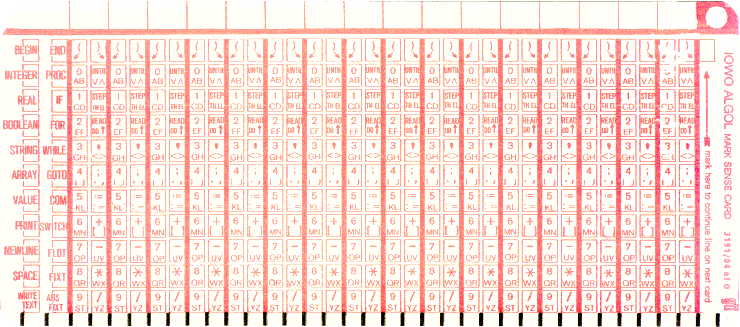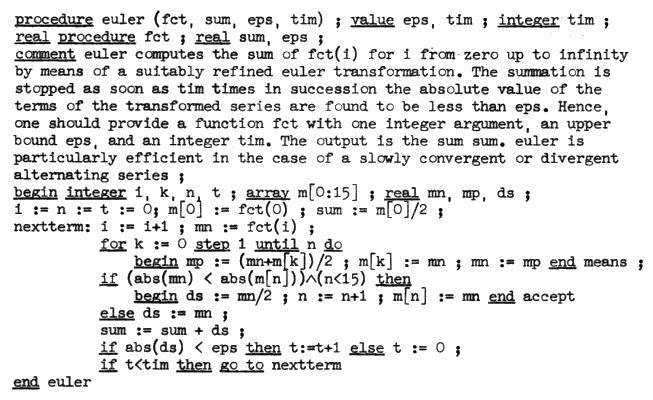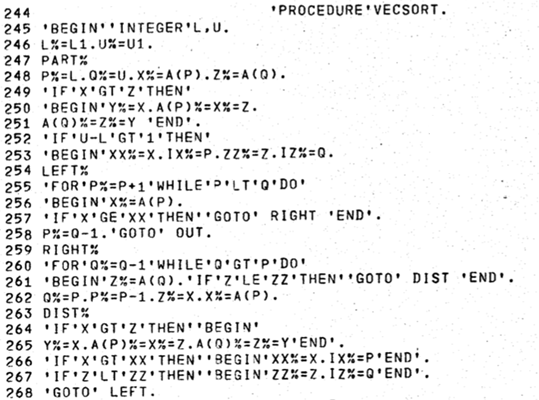Algol mark sense card (about 1968)
Try it yourself!

size in mm: w188, h83.
Card punching machines or on-line terminals were
much too expensive for high schools. The card stacks, usually not
much larger than 30 cards per program, produced by a classful of students were
(physically!) mailed to IOWO. There they were read and interpreted
using a PDP11/40 minicomputer with a Datamation Model 300 card reader (this model was capable of reading pencil-marked cards as well as the usual punched cards).
The now electronically coded data
was sent over a telephone line to the Cyber 73
mainframe computer of the University of Utrecht's computer centre (ACCU), where the
Algol compiler resided. (In the initial phase of the project an Electrologica X8 machine
was used).
The Cyber output (in many cases only error messages!)
was communicated to the school the other way around. Total
turn-around time must have been at least a full week!

- SPACE(n) inserts n spaces in printer output
- NEWLINE(n): next symbol will appear on the first position of the n-th new line
- WRITETEXT('('text')') prints the text string (enclosed in string quotes '(', ')' as required by the Cyber compiler).
- FIXT( b,a,X) prints the number X with b digits before and a digits after the decimal point, and always preceded by a + or - sign
- ABSFIXT as FIXT however the sign is omitted
- FLOT(n,m,X) prints X as a floating point number
- PRINT(X) prints the number X always in 24 positions (including one or more spaces), using FIXT or FLOT format depending on X.
- READ reads a number in FIXT format
For those not familiar with Algol 60 we present a short procedure in 'underscore' style, taken from the 'Report on the Algorithmic Language Algol 60' [1].

Below is an example of 'apostrophe' style Algol.

References
- [1] Peter Naur (ed.): Report on the Algorithmic Language Algol 60. Regnecentralen, Copenhagen 1960.
- [2] Daniel D. McCracken: A Guide to Algol Programming. John Wiley 1962.
(January, 2017)
